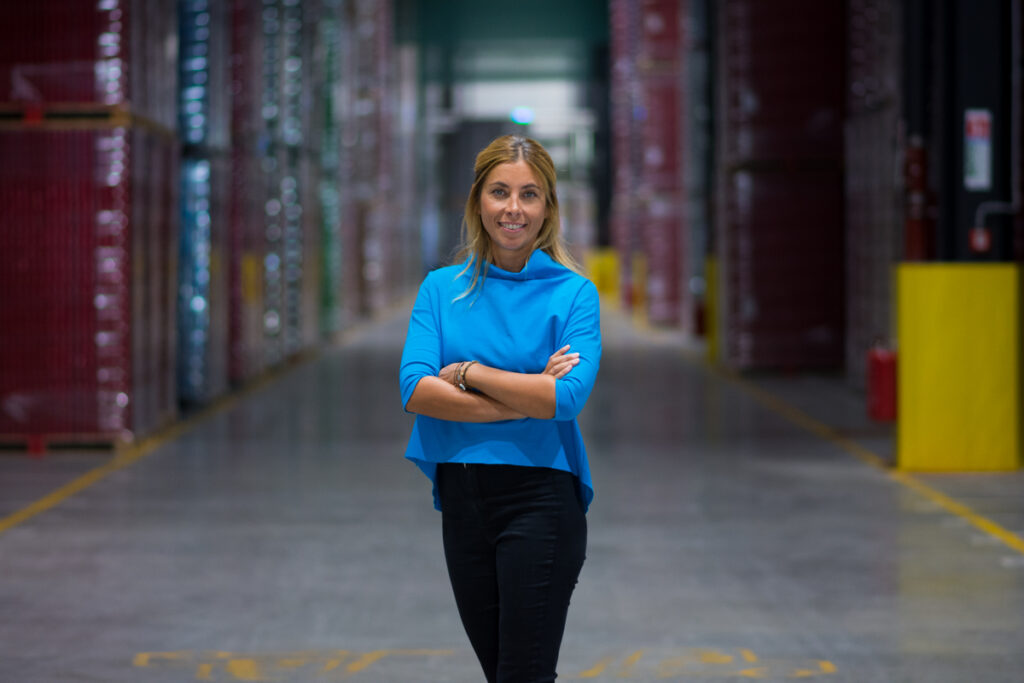A unified approach, stronger regulation, and partnership across all sectors are essential for meeting EU environmental targets and safeguarding the future of Serbia’s packaging industry.

CORPORATE INTERVIEW
Jelena Petljanski
The newly elected President of the Alliance for Circular Packaging and Sustainability and Public Affairs Manager at Ball Corporation for Central and Eastern Europe
We spoke with Jelena Petljanski, the newly elected President of the Alliance for Circular Packaging and Sustainability and Public Affairs Manager at Ball Corporation for Central and Eastern Europe. In her dual role, she is set to lead industry efforts towards more sustainable packaging solutions and stronger circular economy practices across the region.
Without synergy between the state, industry, and recyclers, it will be difficult to match the EU’s pace
You have taken on the role of President of the Alliance for Circular Packaging. What are your first steps and priorities?
First of all, I would like to thank you for the trust placed in me. The Alliance today brings together companies that employ thousands of people and form the backbone of the packaging industry in Serbia. My initial steps are focused on strengthening cooperation with state institutions, enhancing dialogue with the recycling industry, and initiating concrete measures to align domestic regulations with EU standards. One of the priorities is a proposal to establish continuous dialogue in cooperation with the Ministry of Environmental Protection, in order to accelerate the transition towards systems that support recycling and boost the competitiveness of our industry in the European market.
How does the new EU Packaging and Packaging Waste Regulation (PPWR) affect Serbia?
The PPWR, the new EU regulation, aims to promote a circular economy and reduce the negative environmental impact of packaging. It replaces the existing Packaging Directive and introduces significantly stricter requirements for design, reuse and recycling. Serbia’s alignment with the new European Regulation is a prerequisite for our products to remain competitive on the EU market. Simply put – it can have an impact on exports.
One of the key changes within the PPWR is the mandatory introduction of minimum percentages of recycled content in packaging – for example, contact-sensitive PET packaging will be required to contain at least 30% recycled material by 2030, and as much as 50% by 2040. Packaging that cannot be recycled at a rate of at least 70% will be removed from the EU market. The new rules also specifically address paper packaging: a non-paper content of more than 5% can compromise the quality and efficiency of recycling.

How can packaging design be encouraged to be more recycling-friendly?
Regulations such as the PPWR and CBAM set clear rules for environmentally friendly design and fair trade. CBAM is the EU system that charges the cost of carbon emissions on imported goods, ensuring that all products, domestic and foreign, pay equal environmental costs and encouraging the reduction of pollution. From 2026, Serbian companies exporting to the EU will have to provide accurate emission data through the MRV system (the mechanism for monitoring, reporting and verifying CO₂ emissions from production processes – essential for exporting to the EU under CBAM rules). Without it, exports will become more expensive or more difficult.
Alongside CBAM, legislation should also include modulation of EPR fees, clear labelling of recyclability, and incentives for packaging with higher recycled content. The state’s role is crucial in making such rules mandatory rather than optional.
What is needed for Serbia to keep pace with EU targets by 2030?
The Packaging Waste Law in Serbia should be aligned with the PPWR and existing strategies revised, but above all, finally implemented. A new and appropriate legal framework is needed to regulate access to recyclable materials, accurate reporting on the quantity of packaging placed on the market (currently 30% more packaging is placed than reported, according to an independent Eunomia study), and far greater availability of recycling services – currently used by only 28% of citizens, with less than 16% of waste being recycled (the EU average is 50%).
Key measures include strengthening extended producer responsibility (EPR), monitoring EPR organisations through an independent body, introducing incentive fees for recyclable design, ensuring nationwide coverage of collection services, registering products and establishing a National Producers Register, separate collection of packaging (in two streams, not “all in one bin”), and mandatory sorting before waste incineration, particularly in facilities such as Vinča. All these measures are essential for compliance with EU rules and for protecting the environment.
How can the waste loop be closed in the full sense of a circular economy?
Closing the loop begins with the introduction of mandatory primary sorting, the separation of municipal waste before any potential incineration, and the establishment of a deposit return system. Waste can – and must – become a resource, but only if it is properly treated from the very start, beginning with separation.
How do you assess the readiness of the domestic industry for the transition to circularity?
The domestic packaging industry demonstrates a high level of readiness to shift to circular models, particularly the companies within the Alliance, which already operate in line with European standards. Our goal is for the entire system in Serbia to follow this course – because circularity is not only a matter of sustainability, but also the key to the survival of an industry that places a significant part of its production on the European Union market.
Circularity is not just about sustainability – it is the key to the industry’s survival on the EU market
Will domestic legislation be able to keep pace with the EU?
The Ministry has indeed announced some steps, but the business sector expects a clearer plan – including timelines, deadlines, and the formation of a working group involving all stakeholders: the packaging industry, the beverage industry, retail chains, the recycling sector, municipal companies, and consumer organisations. Without synergy, it will be difficult to keep up with the pace set by the EU. That is why we insist on partnership and transparency.
What changes can we expect in the coming years?
The most effective solution, recognised by the EU itself, is the introduction of a deposit return system. Through the media, Serbia has announced that by 2027 it will introduce deposits for PET packaging and cans, but the packaging industry advocates expanding this system to also include glass and multi-layer cardboard. A deposit return system and systematic primary sorting are essential to meeting the required targets.
What are the key factors influencing the achievement of environmental protection goals?
Success in environmental protection depends on aligning domestic laws with EU legislation, particularly through Chapter 27. The key factors are political will, available financial mechanisms, continuous education, and the development of cooperation among stakeholders – partnerships. These goals must serve the public interest and contribute to sustainable development, rather than individual or group interests.
And finally – what is the role of the Alliance for Circular Packaging today?
The Alliance was established because we recognised that without cooperation between companies producing packaging, the industries placing packaging on the market, recyclers, and the state, there would be no systemic solutions capable of addressing the challenges ahead. We began with a focus on deposit systems, but now we are looking at the bigger picture: material availability, quality standards, and market competitiveness. We want to share our long-standing experience, knowledge, and practices with the relevant institutions so that, as a country, we can keep pace not only with trends but also with new environmental standards, and so that, as a packaging industry, we can not only survive but continue to be one of the important export sectors of the national economy.
Photos: Alliance for Circular Packaging